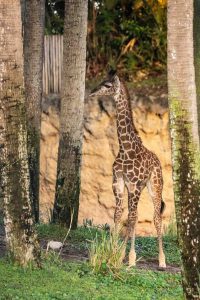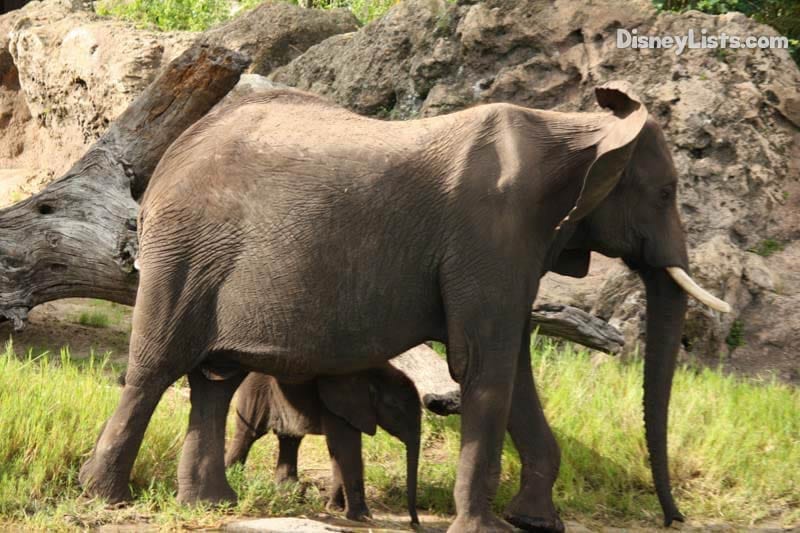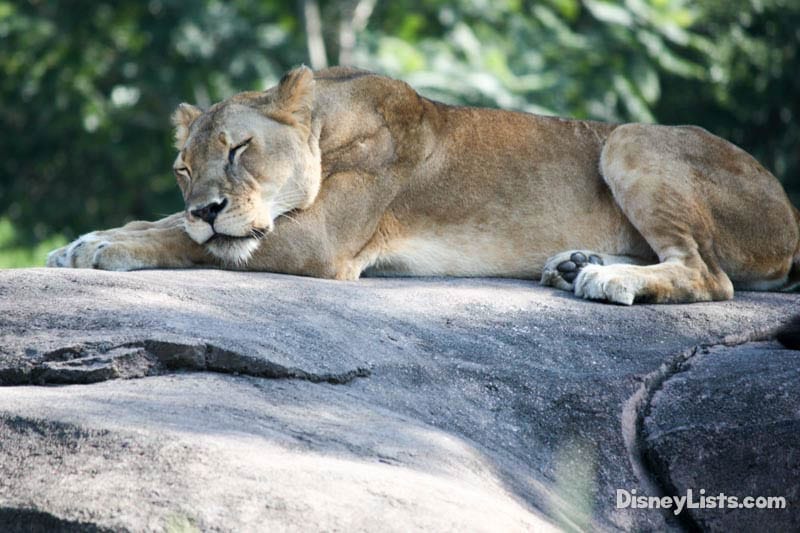NEWS: Meet Tucker, the New Baby Giraffe at Disney’s Animal Kingdom
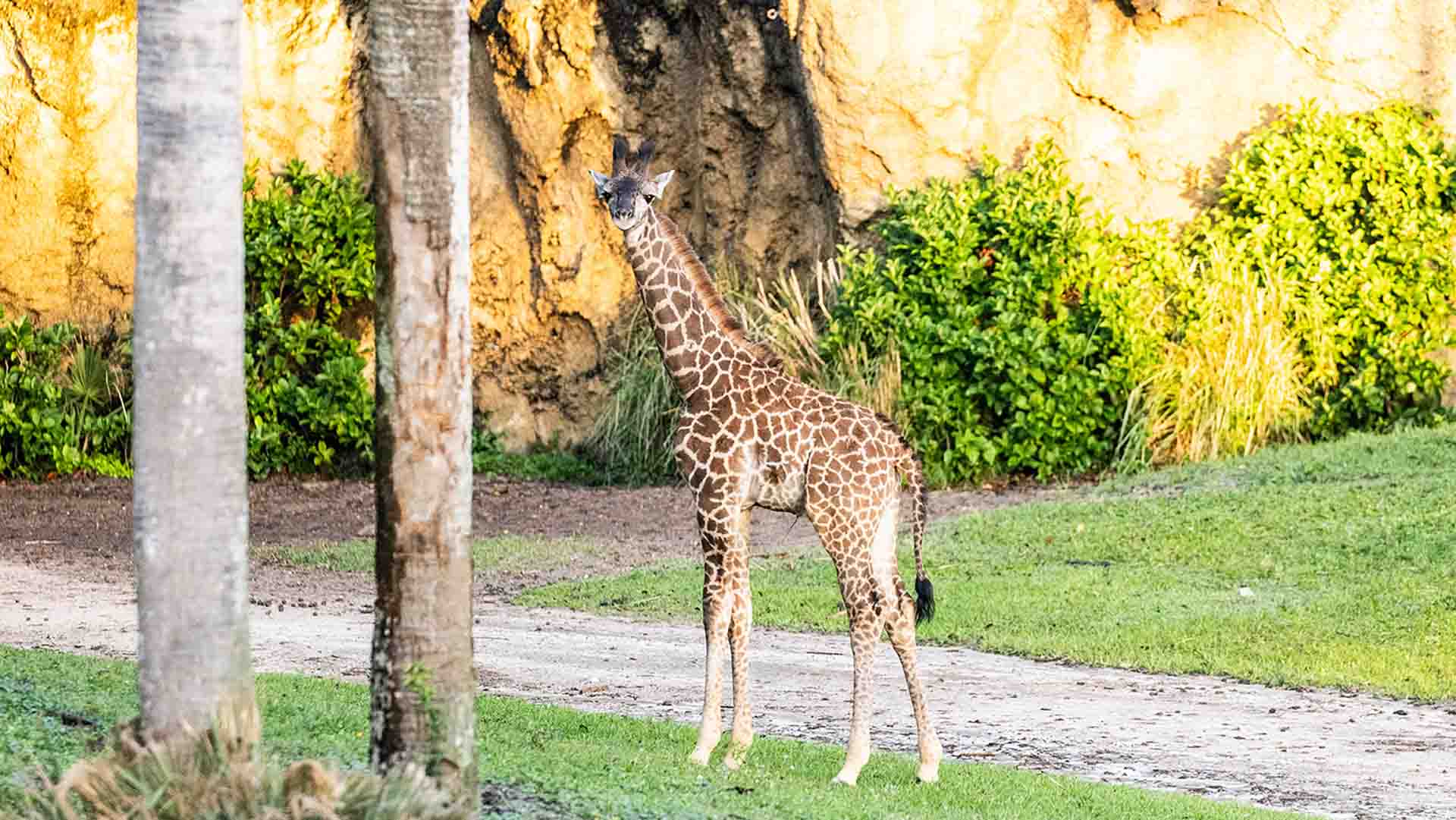
There’s another reason to visit Disney’s Animal Kingdom. Along with Baby Bakso on the Maharajah Jungle Trek, guests can now see a new baby giraffe on Kilimanjaro Safaris! Learn more below!
Here are all the details from Disney Cast Member Dr. Scott Terrell:
We are neck-deep in excitement here as we welcome a towering new addition to our Kilimanjaro Safaris family at Disney’s Animal Kingdom. Mara, our beloved Masai giraffe, gave birth to a beautiful baby boy named Tucker!
This long-awaited arrival marks the first giraffe calf birth at Walt Disney World Resort since 2021 and underscores our ongoing commitment to wildlife and species protection. Mara, who joined our savanna in 2015, has proudly expanded her family, not once – but three times now! It seems like just yesterday we were celebrating the birth of her first calf, Jabari, in 2019. Today we watched Mara and Tucker stretch their legs and stroll out onto the savanna.
A Baby Giraffe Stands Tall for Conservation at Animal Kingdom
The birth of Mara’s baby giraffe at Animal Kingdom is a significant achievement. The Masai giraffe is classified as endangered by the International Union for Conservation of Nature (IUCN), with around 30,000 giraffes remaining globally. With habitat loss and poaching posing threats in their natural environments, Disney is working hard to help protect this iconic species.
“Tucker’s birth is really important for us. It’s a testament to Disney’s leadership in animal care and conservation and our incredible partnership with the Association of Zoos and Aquariums (AZA) and the Species Survival Plan. This plan focuses on maintaining genetic diversity of the giraffe population and helping to prevent giraffes from becoming extinct,” said Dr. Mark Penning, Vice President of Disney’s Animals, Science and Environment.
Our team of world-class animal care professionals and expert on-site veterinarians have been working around the clock to ensure both Mara and her calf receive leading care. This birth is a true testament to the incredible work of our animal care team at Walt Disney World.
Tucker’s arrival contributes to the genetic diversity and health of the Masai giraffe population, ensuring that future generations can enjoy the sight of these majestic animals towering above the savanna.
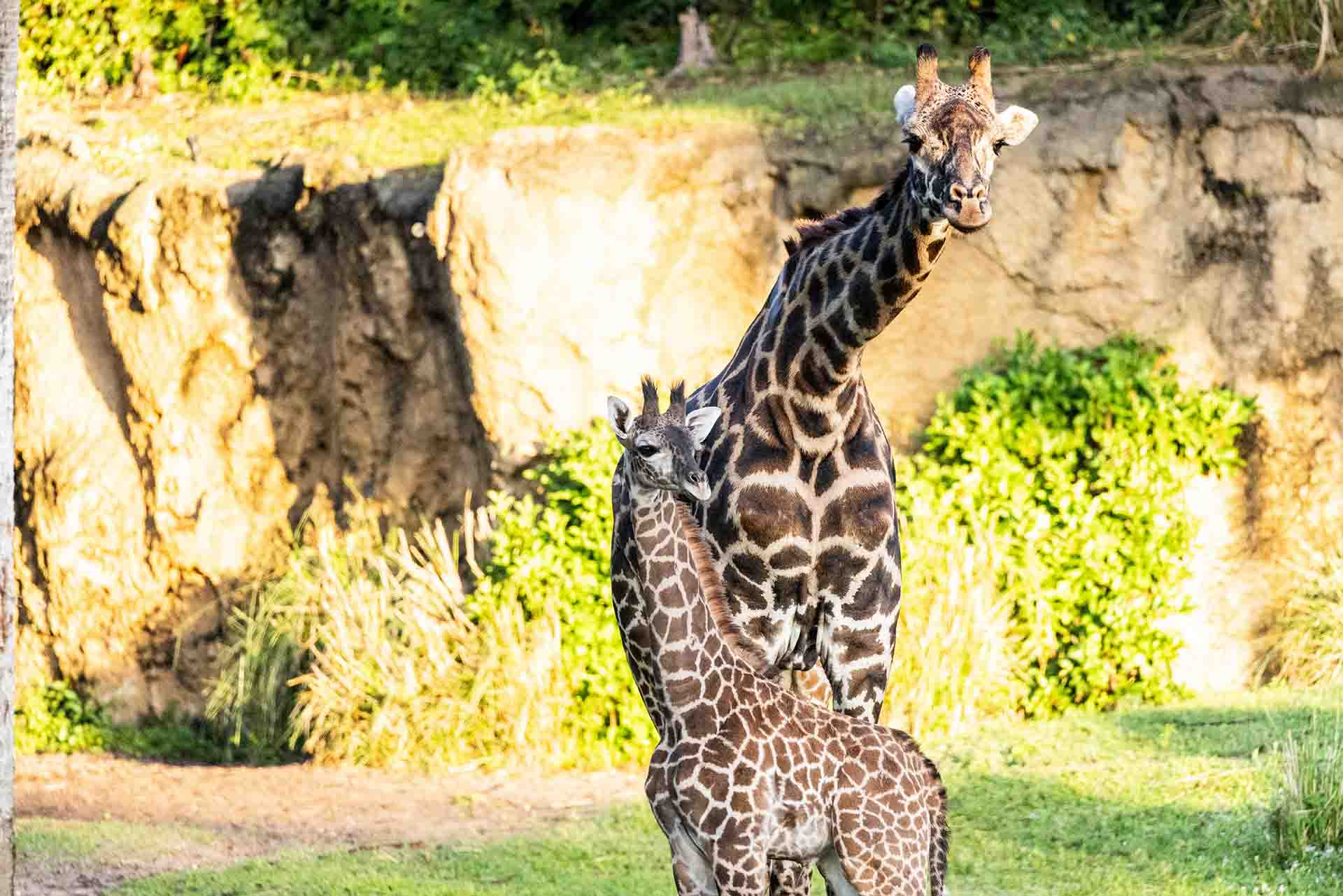
The Disney Conservation Fund Celebrates 30 Years of Wildlife Protection
Recognizing the urgency to protect rapidly vanishing wildlife and habitats around the world, the Disney Conservation Fund provides support to respected conservation organizations already at the forefront of critical conservation efforts.
This year, the Disney Conservation Fund (DCF) is celebrating its 30th anniversary. Since its inception in 1995, the Disney Conservation Fund has directed more than $132 million to community conservation programs to support organizations working with communities to protect wildlife, inspire action, and promote environmental resilience.
“Through DCF grants to local and global nonprofit organizations and the expertise of Disney Conservation cast members driving both scientific research and on-the-ground action, Disney helps protect endangered species, restore habitats, empower the next generation of conservation leaders, and address environmental challenges worldwide,” said Claire Martin, Senior Manager of Biodiversity Conservation, Environmental Sustainability at The Walt Disney Company.
For updates on Tucker, and to see all the amazing work our talented team of cast members are doing for the more than 5,000 animals across Disney World, follow Disney’s Animals, Science and Environment on Facebook and Dr. Mark on Instagram.
RELATED ARTICLE: Kilimanjaro Safaris – 8 Fun Facts You May Not Know
by Jenn S
Kilimanjaro Safaris is an attraction at Disney’s Animal Kingdom theme park where guests will board a safari truck that takes them into the Harambe Wildlife Reserve to view free-roaming animals. Every safari is different, and guests may see hippos, giraffes, elephants, lions, and more during this ride. Have your camera at the ready and hang on because it can get a little bumpy! Here are eight fun facts about the Kilimanjaro Safaris Attraction.
8 – Walt’s Vision Comes to Life
When Walt Disney was designing the original concept for the Jungle Cruise at Disneyland, he wanted to use real animals. This idea was quickly scrapped in favor of audio-animatronic versions of the animals due to the many factors involving the use of live animals. Decades later, when Imagineers began the concepts for Disney’s Animal Kingdom theme park, they knew they would finally have an opportunity to bring Walt’s vision and love of animals to life with Kilimanjaro Safaris.
7 – Size
Kilimanjaro Safaris is the largest attraction at Walt Disney World. So large in fact that the entire Magic Kingdom could fit inside the attraction.
6 – Hidden Mickey
If you are looking for hidden Mickey’s, take a look at the island that the flamingos congregate on. This will be just past the elephants and located on the left-hand side of the truck. The island is shaped like Mickey if you look at it from above.
5 – Storyline Has Changed from Original Concept
The storyline of the attraction led guests on an adventure to stop poachers who had trespassed onto the Harambe Wildlife Preserve and rescue “Little Red,” a baby elephant. Before the park opened, the attraction included a scene where “Big Red,” the mother elephant killed by poachers, could be seen. This was removed from the attraction before opening due to negative responses during tests. The storyline to save Little Red remained, with guests finding her rescued at the end of the attraction. Eventually, the storyline was removed, and the focus of the attraction was the animals themselves and a conservation message.
4 – Yes, They Are Real Trucks
The safari vehicles are GMC trucks that have been converted to run on propane. These trucks are actual free-moving vehicles, and they do not run on a track, the driver is responsible for your safety as well as the safety of the animals while out on safari. This is why, from time to time, your ride vehicle may stop unexpectedly. If an animal is on the ride path, the driver must wait for the animal to clear the area before proceeding. This causes all trucks behind this vehicle to stop as they must remain at a safe distance from each other. At the end of the day, the trucks are driven off the ride and parked in a lot where they can be serviced before the next day.
3 – The Landscape Isn’t Always Real
While you are on Kilimanjaro Safaris, the landscape looks incredibly real. You may forget for a moment that you are actually in central Florida. The flat-top Acacia trees that are common on the African Savannah are actually just Southern Live Oak trees that they trim to look like Acacias. The animals do not seem to mind, though. The Baobab trees, which have massive trunks and look as if they are upside down as their branches are leafless and resemble roots, are not real trees. The ones on the attraction are made of concrete; however, you can see a real one near the Tusker House restaurant in Harambe Village before you enter the ride.
2 – Animals Are Real But Are Contained
While the animals you see on Kilimanjaro Safaris appear to be free-roaming, they are contained to their specific ecosystem by camouflaged walls, water barriers, and cattle guard chains on the ground. The lions are kept in their location by an 18-foot deep and 21-foot wide moat that separates them from the ride vehicles. Disney has done an incredible job of hiding many of these features, so it appears the animal habitats are connected. Animal keepers place food and toys in areas where the animals will be seen from the ride path; this way, guests have the best chance of viewing the animals while on safari.
1 – Animals Get Time to Rest
The animals do not stay on the attraction overnight. Each night they return to their barn located behind the scenes to rest and receive veterinary care. The Animal Keeper team has trained each animal to return to the barn when it hears a specific sound, some returning to a tambourine, a triangle or a bell, among many other sounds. The animals also do not go out on the safari every day as they rotate to allow each animal proper time for rest, care, and enrichment.
Disney’s Animal Kingdom theme park offers many different animal viewing attractions and locations, but one of the best attractions is the Kilimanjaro Safaris. While many guests make this the first stop of the day while visiting the park, animals are active and can be seen throughout the day. This popular attraction can have a long wait time and is now one of the Lightning Lane Multi Pass attractions. If you’ve been on Kilimanjaro Safari, what animal was your favorite?
For a no obligation, FREE Quote on a Disney vacation package, please contact our travel partner Magical Vacation Planner at 407-442-0227 (407-442-0215 for Spanish). You can also request a FREE quote online by Clicking HERE.




